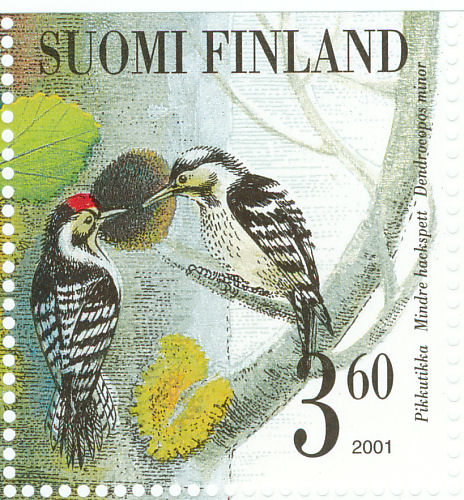The population of lesser spotted woodpeckers (Dryobates minor synon. Dendrocopos minor) has almost halved since 2009 because dead trees are being quickly removed from parks and woods, the British Trust for Ornithology said. The sparrow-sized birds have been declining since about 1980 and only about 2000 remain. The birds tend to nest in decaying wood because it is softer and therefore easier for them to peck when carving a nesting hole. Paul Stancliffe, a spokesman for the trust, said that decaying trees used to be left in place but landowners were now more likely to remove them, partly because of excessive concerns over health and safety.
“They are being tidied up much more, especially in parks,” he said. “If there is a danger of trees falling across paths they are being removed. Lesser spotted woodpeckers are not very good at moving into new areas when they suffer a loss of habitat.”
They lack the power of the bigger great spotted woodpeckers (Dendrocopos major), which can peck chambers in live trees and are thriving, with numbers quadrupling to 280,000 since 1970. The decline in the lesser spotted birds is revealed in an annual report on wild bird populations based on data collected by the trust and published by the Department for Environment, Food and Rural Affairs.
This also shows that the kestrel has declined by a fifth since 2009, possibly because of a reduction in small rodents, its prey. Greenfinches (Chloris chloris) have fallen by 39 per cent and turtle doves (Streptopelia turtur) by 70 per cent over the same period, with both species affected by trichomonosis, a disease that affects the throat and prevents birds from feeding.
Source: The Australian, 19 May 2017
http://www.theaustralian.com.au/news/world/the-times/health-and-safety-…

- Login om te reageren
